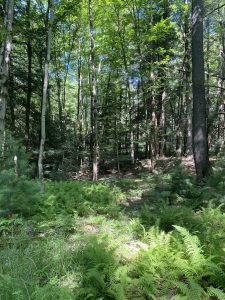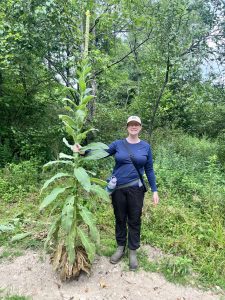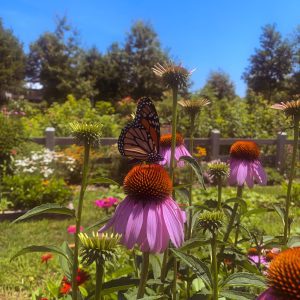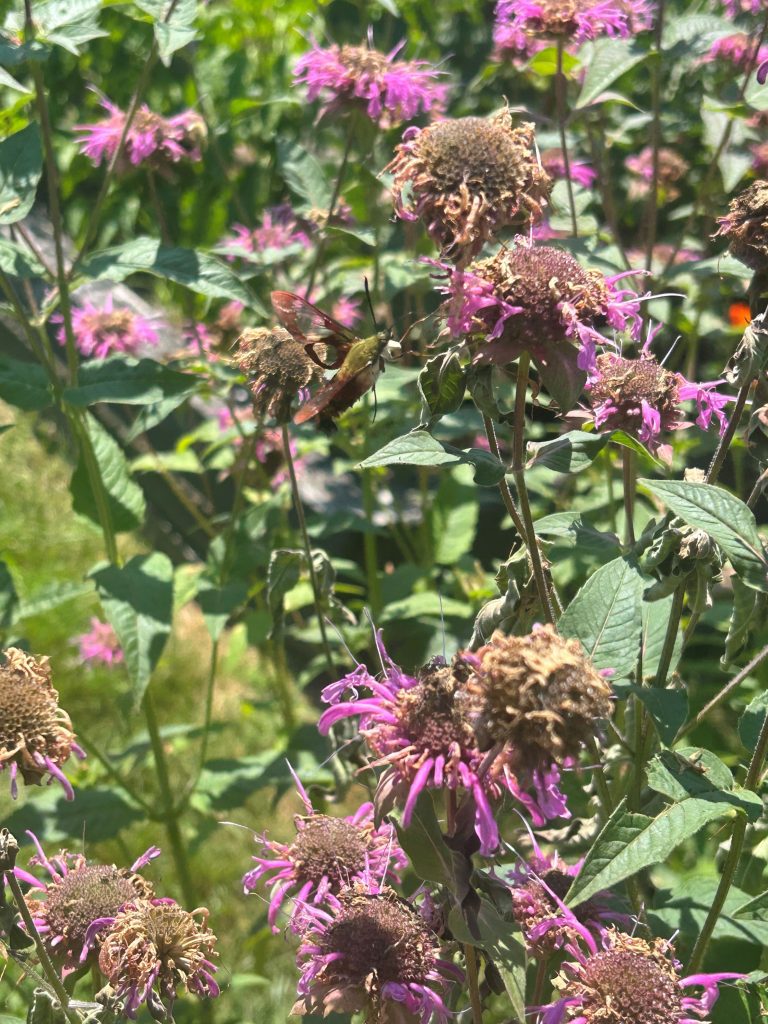Written by Manmeet Singh, Invasive Species Management Assistant

A diverse arrangement of species of ferns and woody plants found in the forested area of the property.
As part of the 2025 Crew Assistance Program, WNY PRISM partnered with local landowners George Klemens and Mary Carol Dearing to survey and map invasive species on their property in the Town of Concord, NY, to assist them in their goal of habitat restoration on their land.
Over the course of 20+ years, George and Mary Carol have worked to transform the land from agricultural grazing pastures to a diverse ecosystem made up of wetlands, hardwood forest—including old growth hemlock—and meadows. George has established a tree farm to grow a variety of native tree species, particularly red and pin oaks, using seeds collected directly from the property. This enclosed garden serves as a nursery for young trees, allowing them to grow strong and tall before being planted across the property without the threat of deer browsing. The trees grow in the nursery for upwards of three years, where they are watered often and pruned to ensure optimal health. To date, over 1,000 trees have been planted, creating a diverse ecosystem for the many animals that now call this area home, including beavers, otters, foxes, minks, coyotes, bald eagles and black bears. They have rebuilt several ponds on the property and have begun the process of stocking them with native fish, and report often seeing fishers or herons hunting for a snack on the water’s edge. The property is designated as a “linkage area” for the Western New York Wildway, meaning it provides a corridor of habitat that allows wildlife to move between natural areas.

Brittnee Bukowski, Invasive Species Management Assistant, holding a very tall common mullein (Verbascum thapsus) after removing it.
To support ongoing restoration efforts and ensure the health of these habitats, George and Mary Carol enlisted the help of WNY PRISM to identify and map invasive species present on their property. Over the course of two days, the Crew surveyed ninety-five acres and mapped populations of knotweed (Reynoutria spp.), autumn olive (Elaeagnus umbellata), reed canarygrass (Phalaris arundinacea), common reed (Phragmites australis), knapweed (Centaurea spp.), mugwort (Artemisia vulgaris), butter-and-eggs (Linaria vulgaris), among others. Providing them with this spatial data is the first step toward prioritizing species for management and developing strategies to prevent their spread. A detailed report, including management recommendations and maps, will help guide them in their next steps.

Easily one of the most identifiable insects in the United States, the monarch butterfly (Danaus plexippus) shows off its distinctive pattern.
In addition to the wild areas, Mary Carol and George have a designated area for an extensive garden. Alongside the tree nursery is a gravity fed water tower, which supports gorgeous garden beds filled with native annuals, perennials and crops. This includes a field of blueberry bushes that Mary Carol allowed the crew to snack from as they surveyed. These native plants create a beautiful scene and provide food and habitat for many pollinators, including the great spangled fritillary (Speyeria cybele), clearwing moth (Hemaris spp.) and the iconic monarch butterfly (Danaus plexippus).
George and Mary Carol’s dedication demonstrates what is possible when restoration and stewardship work in tandem. They hope their efforts can serve as a model for responsible land stewardship and inspire others to take similar action. WNY PRISM is proud to support their work and looks forward to seeing this landscape continue to flourish.





